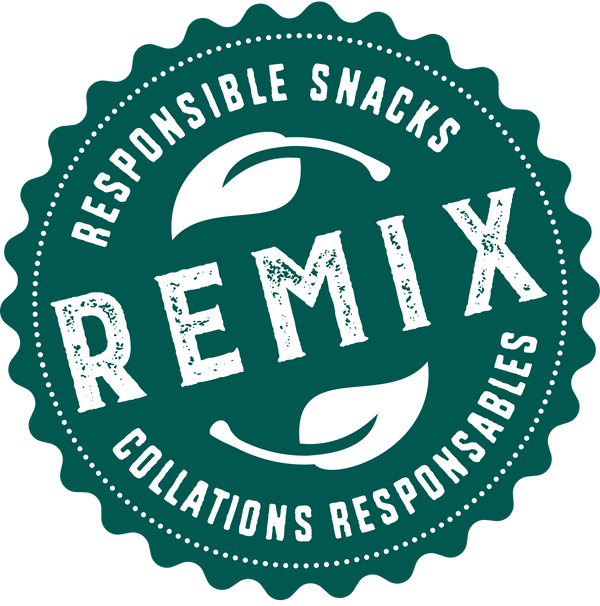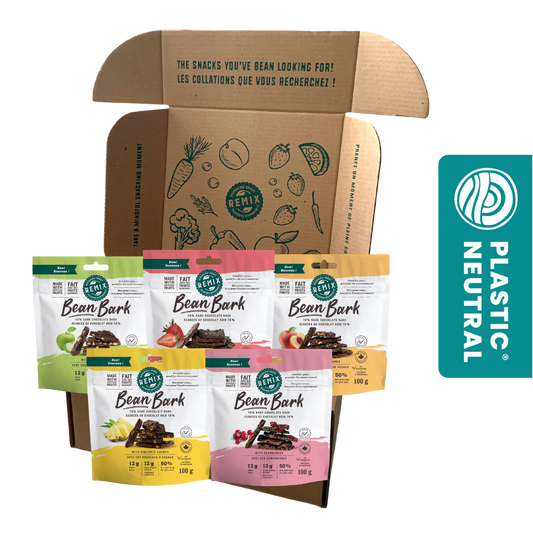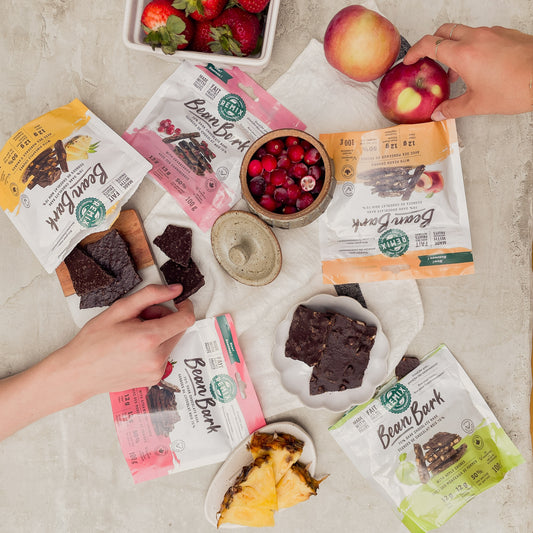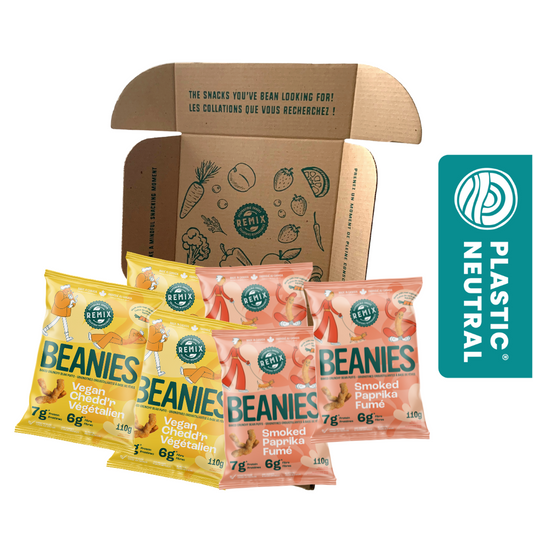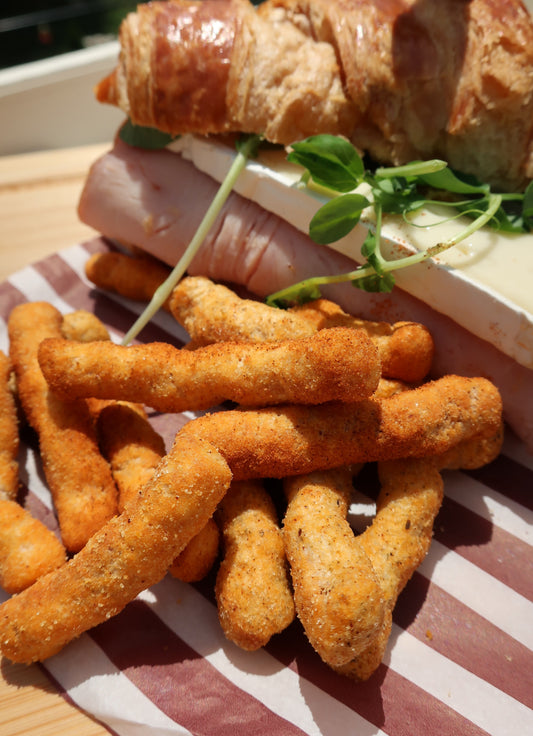
Written by: Fannie Dancose, May 2020
Nutrition is sometimes (..maybe always?) confusing. There is so much information available, it is easy to get lost in the mayhem.
When it comes to snacking, you might have heard or think that it’s not healthy, that preparing healthy snacks takes ages, that it will spoil your appetite, that there are certain foods you should completely avoid, that snacking at night is bad, that… Phew! So many things to consider. It’s exhausting!
Maybe some clarification is needed. Let me guide you through the fantastic world of snacks so you can understand it better, and make wiser choices.
What is a snack ?
There is no official definition of what constitutes a snack. Some people might consider that a food is a snack depending on the time they eat it, its nutritional quality, how they eat it (standing, at a desk) or how much they eat (1). Snacks can also be considered like several small meals that people eat through the day. For the purpose of this article, let's say that a snack is a small something you eat between meals to keep your energy levels high.
Why snack?
As I mentioned, eating between meals helps you stay focused and energized. It can also support good health, provide important nutrients and help satisfy your hunger between mealtimes (2, 3). By eating a snack a couple hours before a meal, you prevent yourself from being super hungry and overeating at the next one.
These are reasons explaining why snacking can be part of a healthy lifestyle. But there are other reasons as to why we snack. For example, we could eat a snack because we are offered something at work or at a party, or because it happens that our favourite food is in our cupboard and we crave it at the moment. Being stressed or bored can also lead some of us to eat a snack because it is comforting. And these reasons are not bad, they are just a part of life!
What snacks to pick?
Now that you know what a snack is and why it can fit into your diet, let’s talk about what kind of foods to eat. Most of the time, choose something that is packed with nutrients (vitamins, minerals) and that will satisfy your hunger. In a more concrete way, pick a vegetable or a fruit (ex: apple) plus a source of protein (ex: nut or seed butter on a whole-grain cracker).
Sometimes it is hard to choose a healthy snack because you are hungry, not at home, and there is only food available in a vending machine or at a food court. In these circumstances have in mind the recommendations, but it is fine to pick a snack according to the food availability and not only its nutritional profile. If this situation annoys you because you feel limited in your choices, or you find it expensive to always buy a snack, you can plan ahead. Personally, when I am going out to run some errands and I know it is going to take more than three hours, I bring a granola bar and a fruit just in case I become hungry.
How to snack?
It is good to know what to snack on, now let’s look at when to snack and in what state because that’s the trickiest part. Healthy eating recommendations state to eat snacks when you feel hungry, but most of us eat by habit and have lost the ability to recognize our hunger cues. You can reconnect with that feeling by taking a break from what you are doing and observe your body sensations.
Learn more about the levels of hunger by looking at the hunger and fullness scale created by two dietitians who developed intuitive eating. It takes time and practice, but in the end you will become aware of when you feel hungry and need a snack or a meal. You can also reach out to a registered dietitian to help you through this process. And, hey, if you are really hungry before going to bed for any reason, don’t be afraid to eat a light snack!
Recommendations also include eating mindfully (2). This means not being distracted by something like your phone or your Netflix show. By doing this, you will take your time to eat and it will be easier to feel when you are full. Try also serving yourself small portions so you don’t end up eating directly from the box or the bag.
The Bottom Line
This article’s purpose is to guide you to make healthier choices, not to become the perfect eater. It is okay to snack on cookies or chips when you really want some or when you feel anxious. If you do not give yourself permission to eat these kinds of food, you might try to eat something healthy, but then not be satisfied, and then end up eating cookies or chips anyways and in bigger quantities than if you had chosen that in the first place! It’s important to listen to your cravings too sometimes.
Also, using food to manage your emotions once in a while is fine as long as you have other strategies to help you with this. Meditation, yoga, sports or art can be good options. Explore what works for you and cope with your emotions with kindness.
If you are curious and want to know more about intuitive eating, check out these books!
Snack ideas (check this handy portion guide)
- Vegetables with a dip
- Fruits with a cookie
- Vegetables with nuts and crackers
- Bean barks (high their high protein content, they will satisfy your hunger!)
References
-
Hess, J. M., Jonnalagadda, S. S., & Slavin, J. L. (2016). What Is a Snack, Why Do We Snack, and How Can We Choose Better Snacks? A Review of the Definitions of Snacking, Motivations to Snack, Contributions to Dietary Intake, and Recommendations for Improvement. Advances in Nutrition, 7(3), 466-475.
-
Government of Canada. (2019). Canada’s food guide - Healthy snacks. Retrieved from https://food-guide.canada.ca/en/tips-for-healthy-eating/healthy-snacks/
-
Miller, R., Benelam, B., Stanner, S. A., & Buttriss, J. L. (2013). Is snacking good or bad for health: an overview is snacking good or bad for health? Nutrition Bulletin, 38(3), 302–322.
